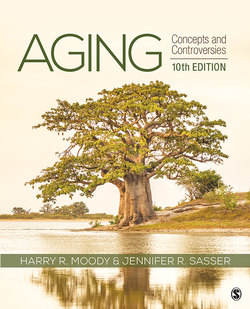Читать книгу Aging - Harry R. Moody - Страница 23
Influences on the Life Course
ОглавлениеEvery theory of aging has its limits: None of them fully explains the variety of ways in which individuals experience old age, and many theories seem to reflect the social values during particular historical times in uncritical ways—for example, by holding up either activity or disengagement as the ideal goal or social norm for later life. The advantage of thinking in terms of age transitions throughout the life course is that we can see adult development as more open ended than people have tended to see it in the past. As a result, the meaning of old age is less fixed, and the choices are more varied. We can contrast this wider social freedom with stereotypes that still persist about human development in the second half of life.
The most widely pervasive view of adulthood is not based on positive development at all, but assumes continuous deterioration and decline. Consider the message on birthday cards: Aging is a disaster; after youth, it’s all downhill (Demos & Jache, 1981). This pessimistic, age-as-decline model gives priority to biological factors and is the basis for the widely shared prejudice called ageism (Applewhite, 2016; Nelson, 2004). We are better off appreciating how social class, life history, and social institutions and policies create variation in the experience of aging. Although aging is a negative experience for some people, for others, it opens the door to meaningful new roles and activities.
